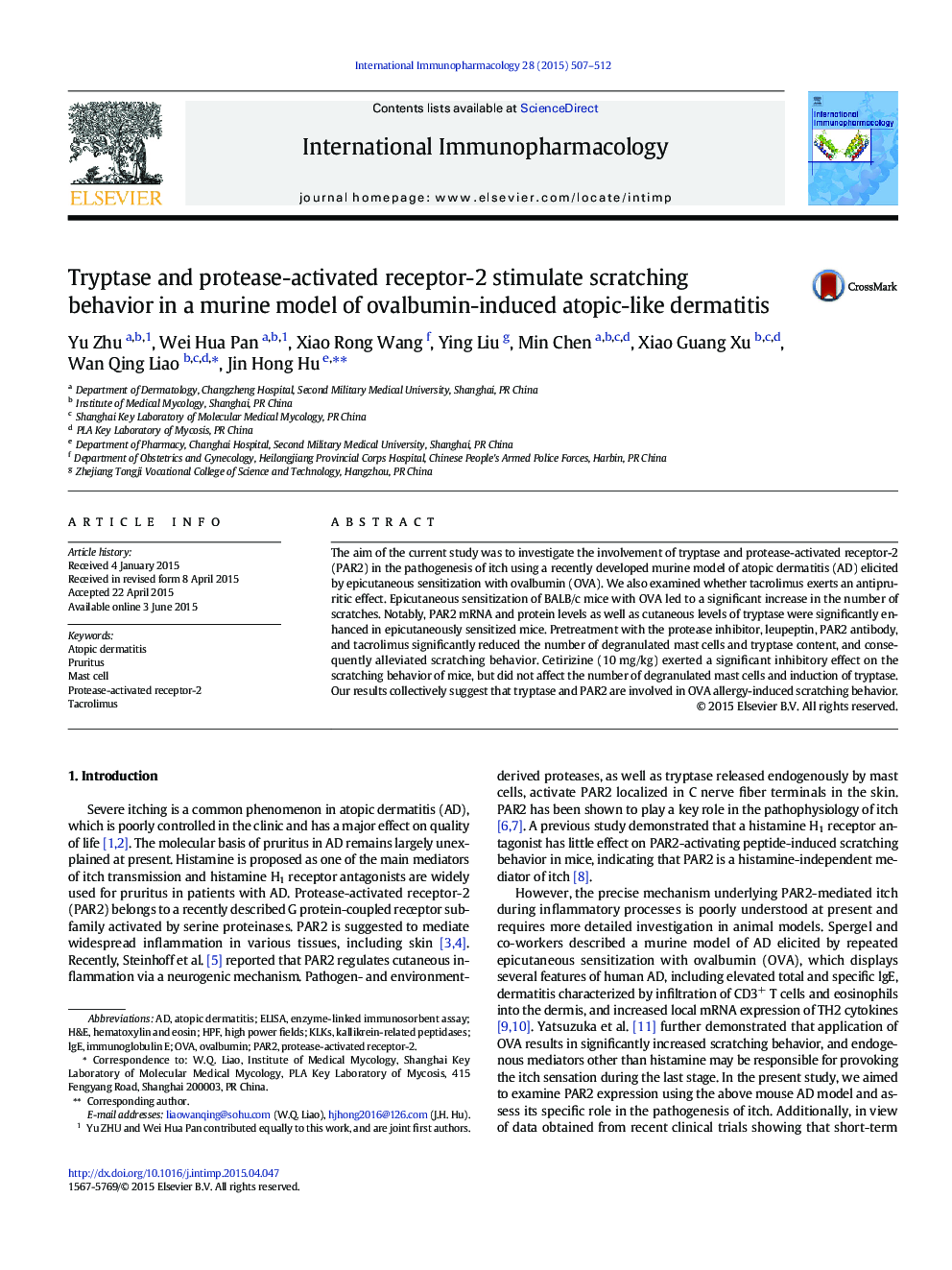| کد مقاله | کد نشریه | سال انتشار | مقاله انگلیسی | نسخه تمام متن |
|---|---|---|---|---|
| 2540486 | 1122594 | 2015 | 6 صفحه PDF | دانلود رایگان |
• Pruritus is a major feature of BALB/c mice sensitized epicutaneously with OVA.
• Tryptase and PAR2 are involved in OVA-induced scratching behavior.
• Tacrolimus has inhibitory effects on the activation of mast cells and suppresses the release of tryptase.
The aim of the current study was to investigate the involvement of tryptase and protease-activated receptor-2 (PAR2) in the pathogenesis of itch using a recently developed murine model of atopic dermatitis (AD) elicited by epicutaneous sensitization with ovalbumin (OVA). We also examined whether tacrolimus exerts an antipruritic effect. Epicutaneous sensitization of BALB/c mice with OVA led to a significant increase in the number of scratches. Notably, PAR2 mRNA and protein levels as well as cutaneous levels of tryptase were significantly enhanced in epicutaneously sensitized mice. Pretreatment with the protease inhibitor, leupeptin, PAR2 antibody, and tacrolimus significantly reduced the number of degranulated mast cells and tryptase content, and consequently alleviated scratching behavior. Cetirizine (10 mg/kg) exerted a significant inhibitory effect on the scratching behavior of mice, but did not affect the number of degranulated mast cells and induction of tryptase. Our results collectively suggest that tryptase and PAR2 are involved in OVA allergy-induced scratching behavior.
Journal: International Immunopharmacology - Volume 28, Issue 1, September 2015, Pages 507–512
